A Very Different Voice
The climate art of Xavier Cortada inspires Jennifer Jurado’s work on climate resilience.
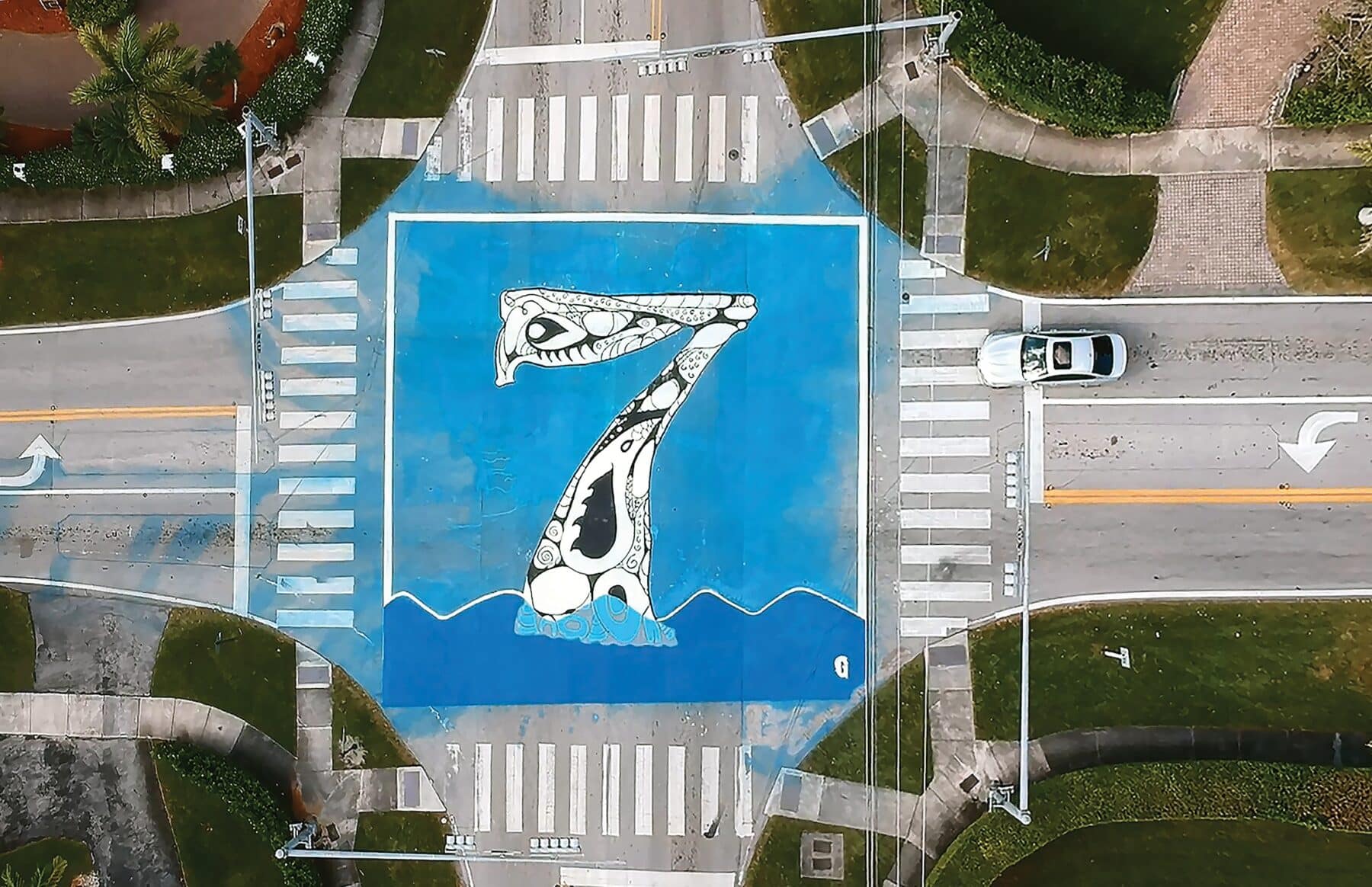
Xavier Cortada recruited art students from four local high schools to help him paint Elevation Drive at four major intersections along a 2.5-mile stretch of Killian Drive (in the Village of Pinecrest, Florida’s main thoroughfare). Most residents of Pinecrest driving along the road from east to west—inland and away from the Atlantic Ocean—would expect to gradually move to higher ground that is less vulnerable to rising seas. Many were surprised to learn that intersections further west had lower numbers than some closer to the coast. This discovery revealed that Pinecrest is located on a ridge and that those living west of the ridge were more vulnerable to sea level rise than some of their neighbors closer to the bay.
Xavier Cortada’s The Underwater is a series of public art installations that reveals the vulnerability of Florida’s coastal communities to rising seas. In the form of murals, crosswalks, concrete monuments, and yard signs, the artworks prominently feature the elevation of the site where they’re located. Through community workshops, apps, and even buswraps, these works raise awareness, spark conversations about climate, and catalyze civic engagement.
As the chief resilience officer of Broward County, Florida, this kind of engagement is vital to me: I’m responsible for leading climate mitigation and adaptation strategies across our 31 municipalities with 1.9 million people. Our land is between 4 and 9 feet above sea level, and we have nowhere to retreat if it floods. A lot of my effort is focused on helping to guide planning and management decisions that support our natural resources as well as our built environment, in addition to working with state, federal, and local agencies on a coordinated strategy to reduce the severity of the impacts of climate change.
In Broward County, we’ve been working on climate initiatives since 2000. But despite all our progress, we’ve really struggled with communications and community engagement. We don’t have the large community-based activist groups that have served as on-the-ground partners in some other places. And we are aware that government isn’t always the best messenger, and that we need a diversity of voices.
I first encountered Xavier’s work at an environmental youth summit with a few thousand students. I was really overwhelmed with the quality of the work and the students’ connection with the history behind it. Xavier explained his own experience as an artist: he had gone to Antarctica and felt the ice melt in his hands and realized how that connected to the communities that he loves. He was utilizing this creative messaging of art to engage and communicate in such a powerful way.
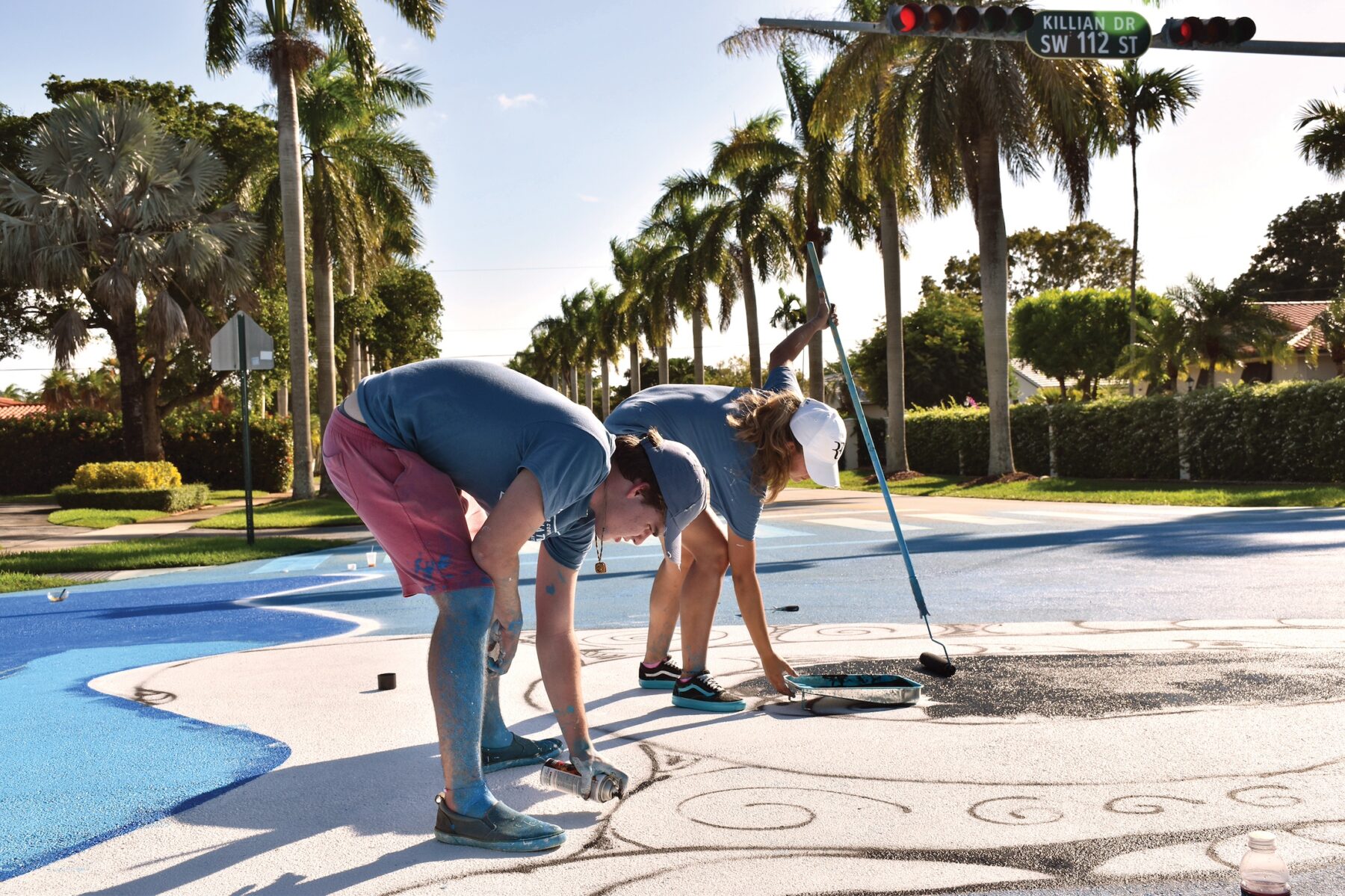
After I met Xavier and discovered his work, we in Broward County began to envision how we might work with him directly. The people who typically work in this arena tend to communicate like I do—I mean, we’re all technical people. No matter how I try to simplify things, I have trouble getting my message across. But Xavier is a very different voice. Talking with him wasn’t like an academic conversation; it was one of really deep connection. What he says has its origin in his heart. We asked Xavier to present to our climate task force, and then we began to plan to work together with schools.
One thing that struck me is that Xavier engages in a different kind of climate conversation. Often people are just overwhelmed and feeling a sense of devastation and loss when it comes to climate change. Xavier is able to talk about providing individuals with agency—that you have an important stake in what’s happening, and you have the capability to be an important messenger. He emphasizes the power of your voice and your participation, that this is about your community.
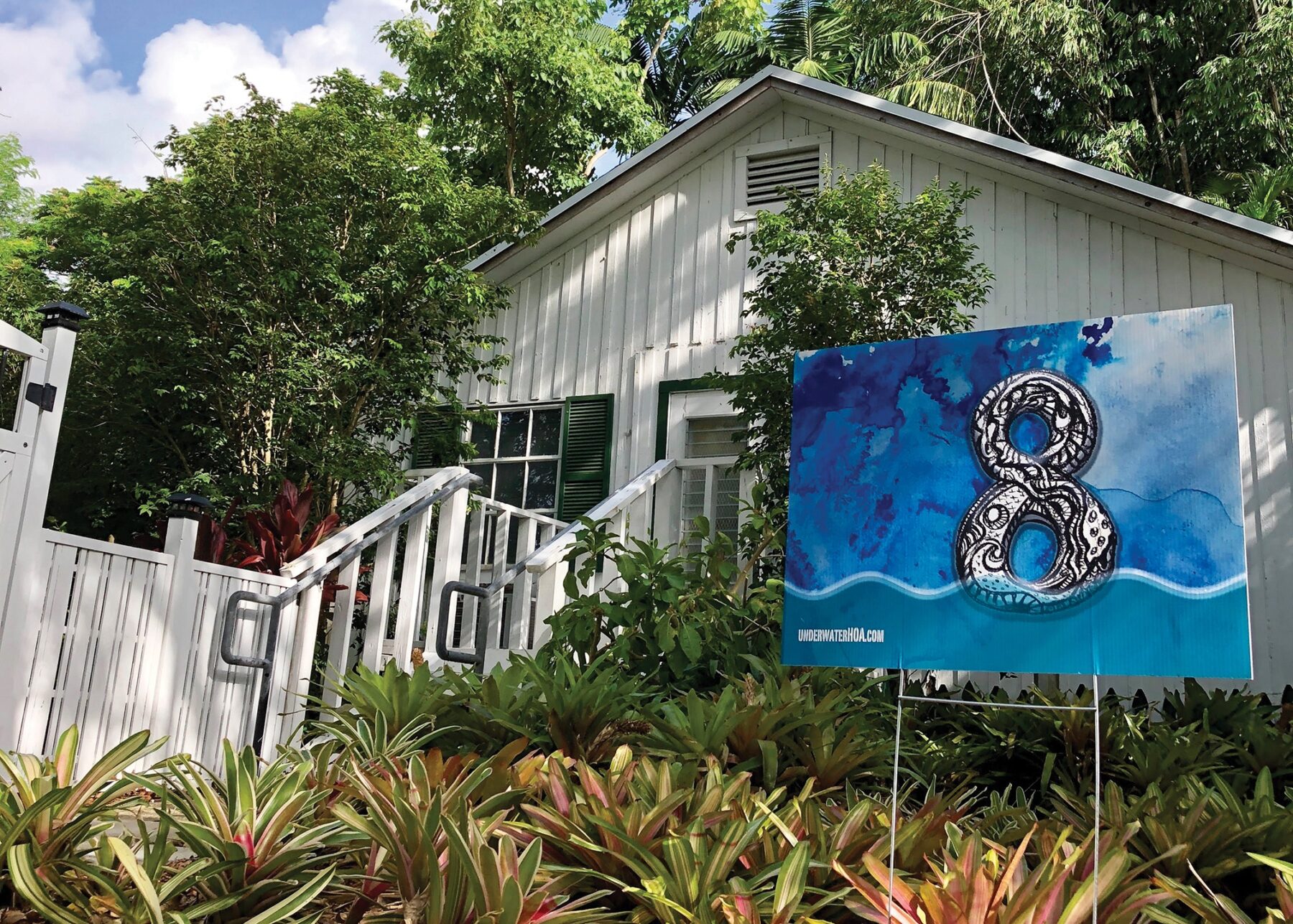
Elevation Yard Signs display a home’s elevation above sea level to catalyze conversation and action around climate change. Distinct from traditional political or “for sale” signs, the ambiguous elevation numbers pique the curiosity of neighbors, friends, and family. Each sign also features Cortada’s Antarctic Ice Paintings, conceptually bringing Antarctica’s melting ice to the doorsteps of coastal residents as a stark warning of what will come without a rapid transition away from fossil fuels.
Another reason we were excited to work with Xavier is that he really understands and cares about young people. He leaves them feeling empowered and capable and invested. When children join a workshop, they learn about sea level rise. They can use an app to see what their local elevation is, and how changes in sea level will affect their school and their neighborhood. They work on making a yard sign with the elevation of their home and Xavier paints an incredibly beautiful mural in the hallway of their school, with the elevation of the school. Imagine how empowering it is for those 100 students to be the keepers of this knowledge: they’re the experts, they’re able to lead that next level of conversation. I think he leaves all of us feeling like we’re not destined to inherit the problem. We have the capacity to be part of the solution.
We not only hosted workshops at 10 public schools, but we also invited Xavier to speak and hold a workshop at Water Matters Day—our county’s largest environmental event, with 3,000–4,000 attendees annually. Later we organized a community climate conversation with Xavier focused on our central county neighborhoods, and we are installing Xavier’s art on the façade our county garage. It’s a beautiful tile mural featuring the elevation of the garage in downtown Fort Lauderdale. And just now, actually, I was able to sign off on an additional art installation we will feature right outside our commission chambers.
So much about Xavier’s conversation is trying to get people to pause long enough to ask the question: “What am I looking at?” And to use that art as an opportunity to have conversations that wouldn’t have happened otherwise.
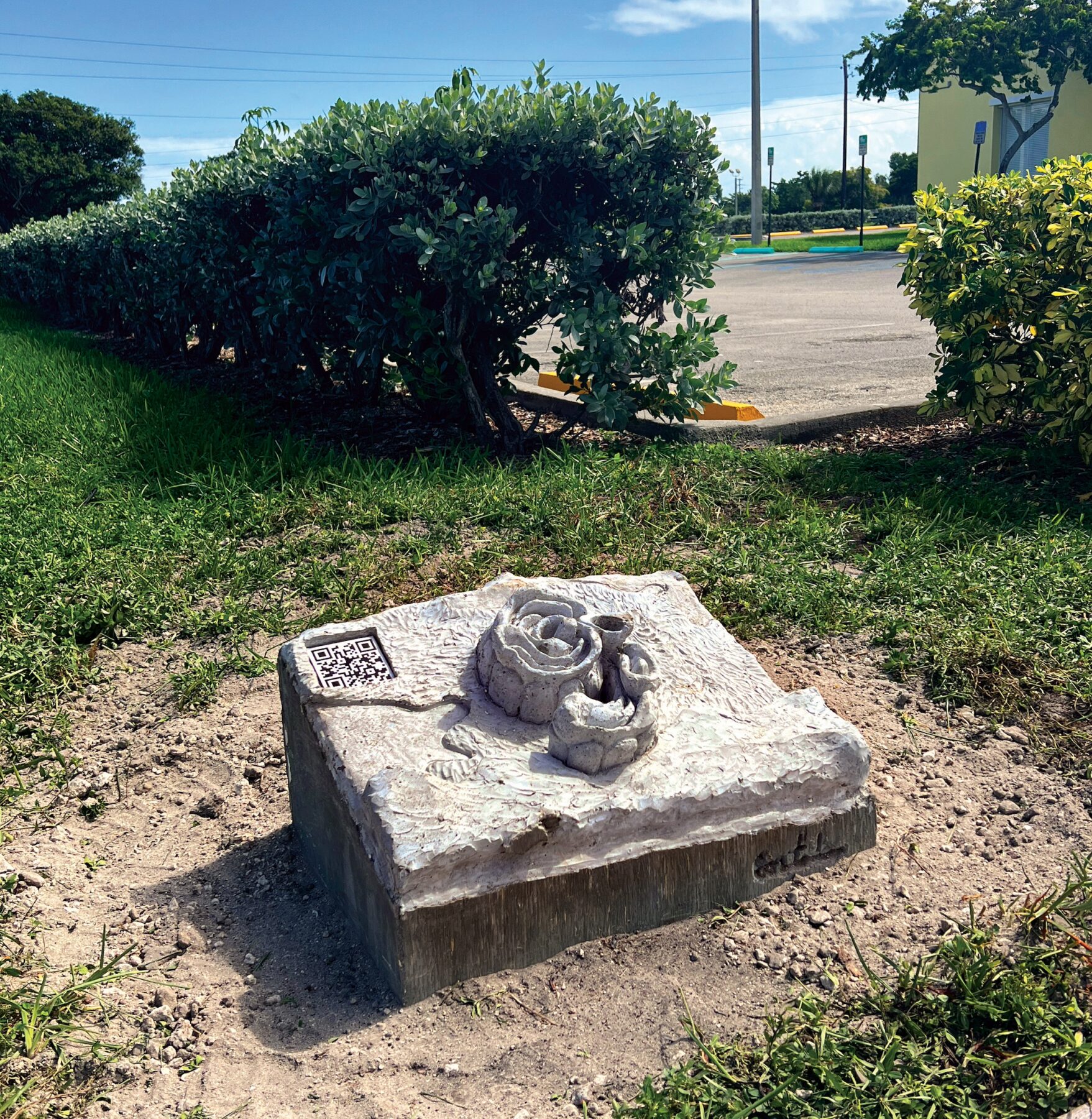
Xavier Cortada, Underwater Elevation Sculpture (Hard Positive), 2023, sustainable concrete.
Cortada is creating a permanent interactive art installation of sustainable concrete elevation sculptures across all the more than 200 parks in Miami-Dade County, Florida. Anyone who scans the sculptures’ QR codes can discover their home’s elevation above sea level and pick up a free Elevation Yard Sign to put in their front yard, joining the countywide installation and raising awareness in their neighborhood.
Xavier Cortada, Underwater Elevation Sculptures (Hard Positive Numbers), 2023, sustainable concrete.
These numbers are used in Cortada’s large sculptures, each depicting a park’s elevation above sea level. The concrete markers are made from seawater, recycled aggregate, and nonmetallic reinforcement, aiming to use building materials that are less energy-intensive and better for the environment.
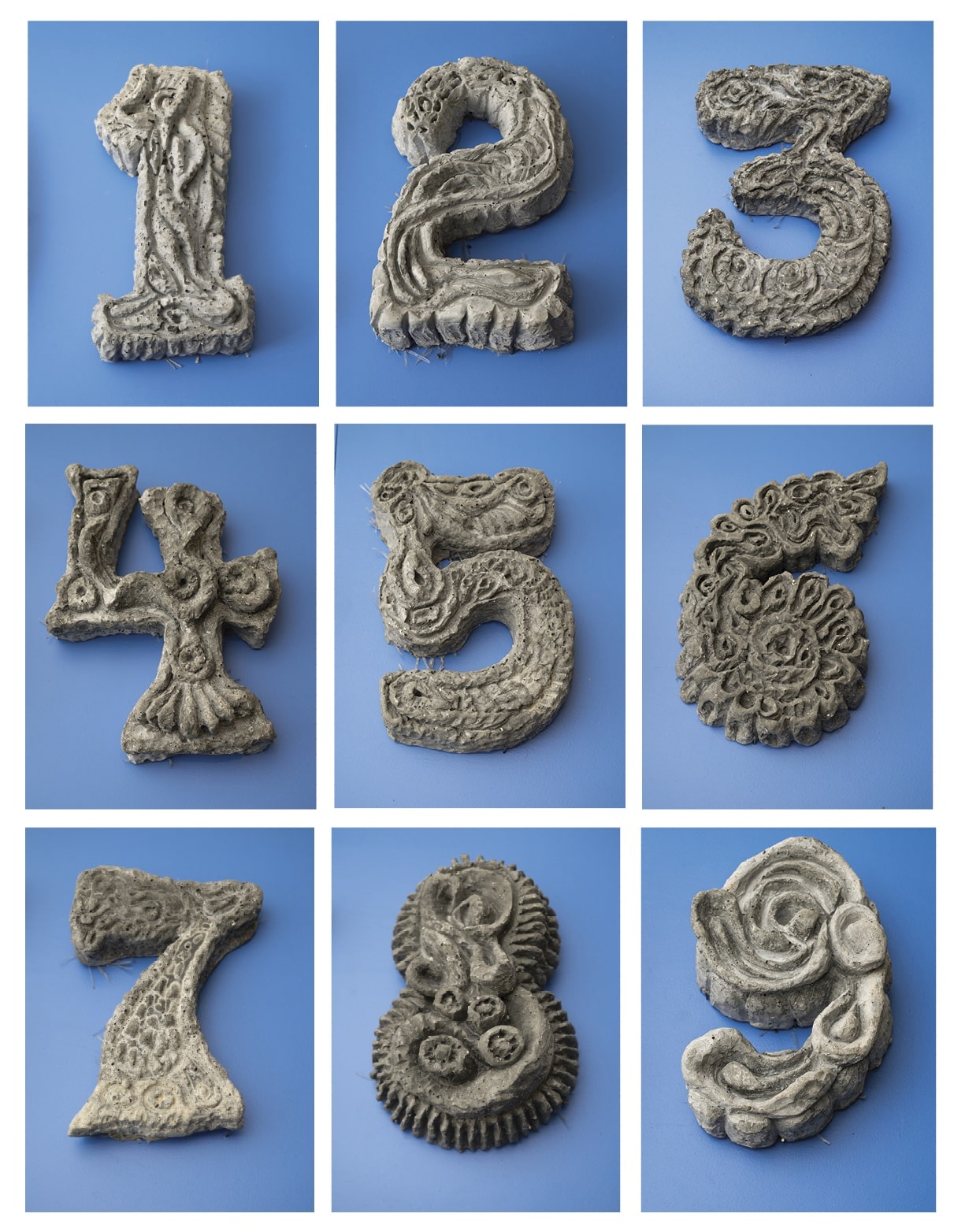
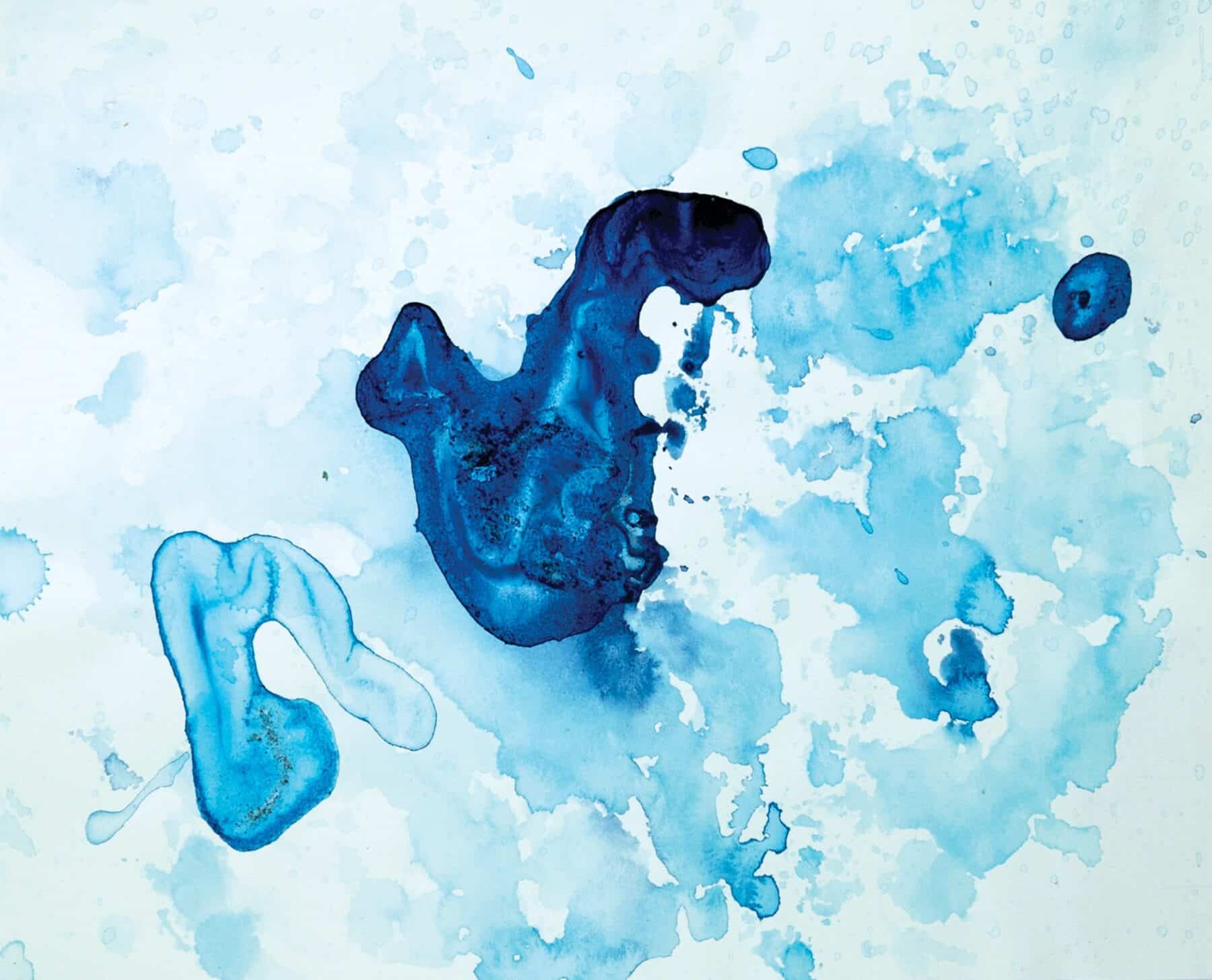
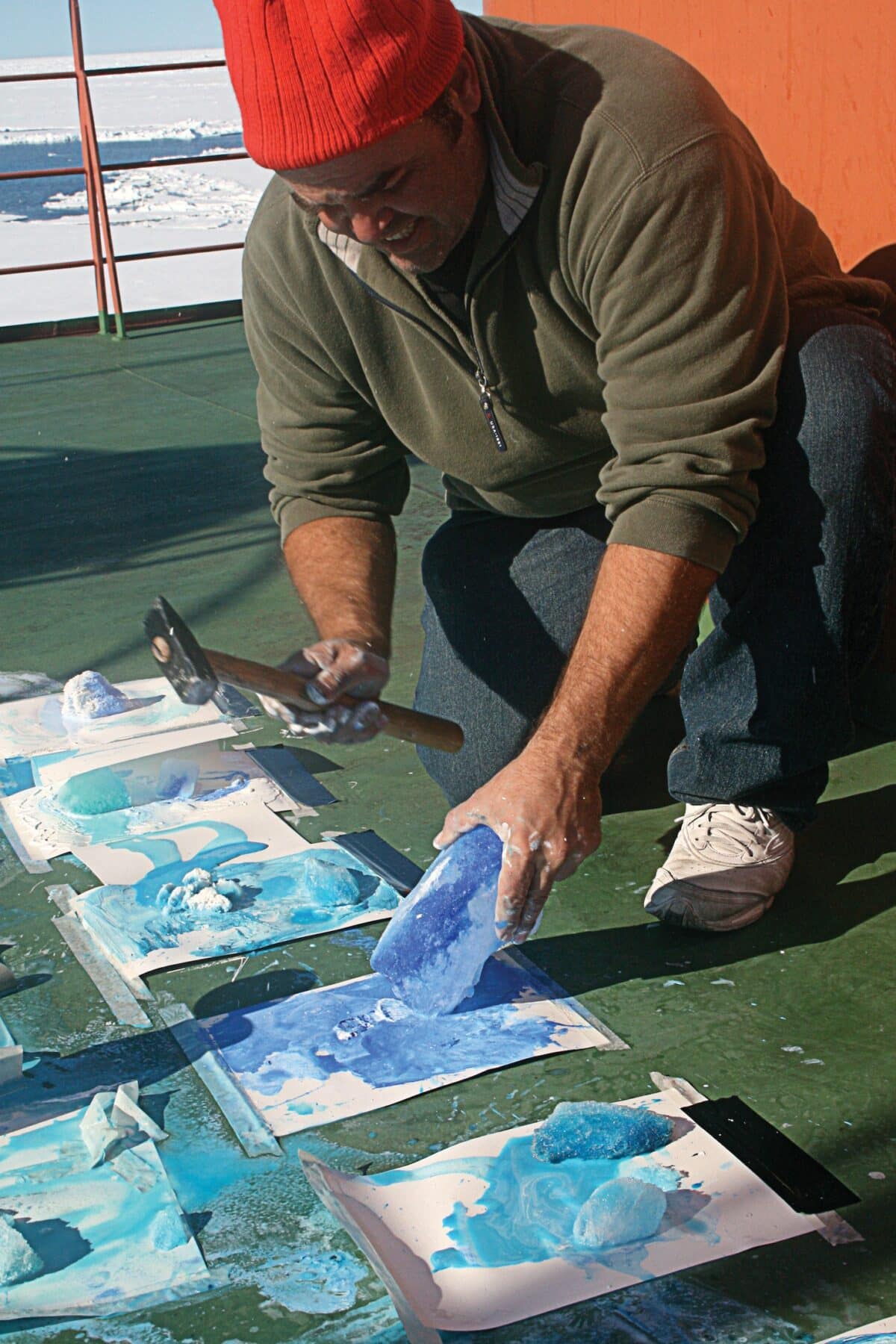
In 2007, Cortada created a series of paintings using sea ice, glacier, and sediment samples provided by scientists working in Antarctica, making the continent itself both the subject and the medium of the art. The paintings, serene yet foreboding, are a poignant reflection on the impact of climate change on the artist’s hometown of Miami—and the world. Made in Antarctica, these artworks use the ice that threatens to melt and submerge coastal cities.
In response to his Antarctic Ice Paintings created 18 months earlier, Cortada used arctic ice to produce a series of paintings aboard a Russian icebreaker returning from the North Pole. He taped pieces of paper to the top deck of the icebreaker and placed North Pole sea ice and paint on them. As the icebreaker journeyed south from 90 degrees north, carving through the sea ice by sliding on top of it and then crushing down through it, Cortada’s ice melted and the pooled water moved as it evaporated, creating the Arctic Ice Paintings. He sought to use the vessel’s motion to capture the existence of sea ice before it vanished, understanding that traversing the Arctic Ocean in the decades to come would not require an icebreaker.
